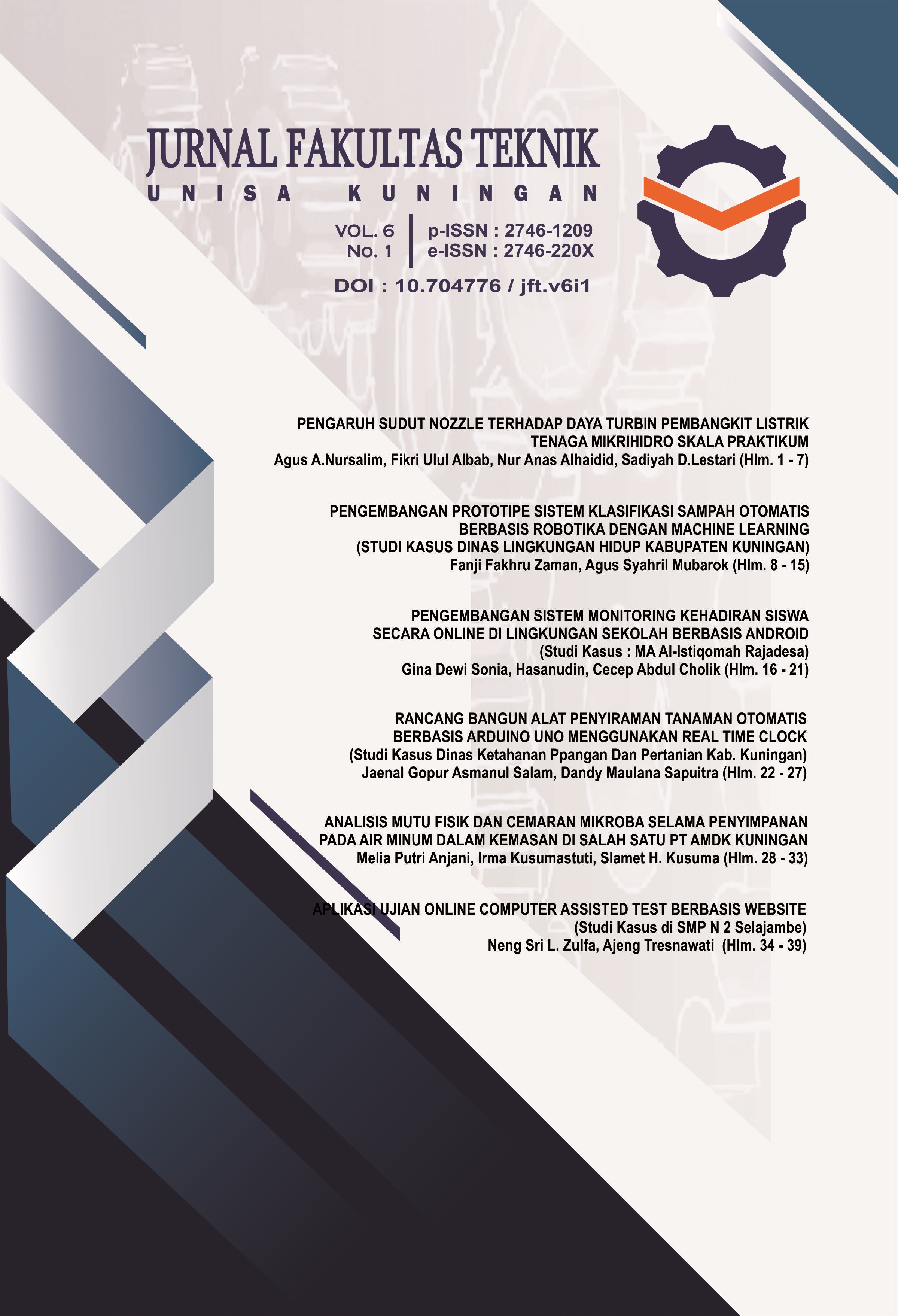ANALISIS MUTU FISIK DAN CEMARAN MIKROBA SELAMA PENYIMPANAN PADA AIR MINUM DALAM KEMASAN DI SALAH SATU PT AMDK KUNINGAN
DOI:
https://doi.org/10.70476/q48hp289Keywords:
Physical Quality, Microbial Contamination, Storage PeriodAbstract
Bottled drinking water is raw water that has undergone several processes, has been packaged, and has been declared safe to drink, bottled drinking water is produced by the industry through a series of automated processes and has been tested for quality before being distributed. The purpose of this study is to find out and analyze the physical quality and contamination of Coliform microbes in bottled drinking water during storage. Research has been conducted on the microbiological quality of bottled drinking water at one of PT AMDK KUNINGAN. The water samples used were 3 samples with different production (new, 6 months and 1 year) production. The research on the quality of bottled drinking water was carried out by physical tests including color, odor, and taste while chemical tests used the TPC (Total Plate Count) method, using PCA (Plate Count Agar) and PDA (Potato Dextrose Agar) culture media, and performing one dilution. To collect information about the water source and the effectiveness of the filtration process in the main equipment of PT AMDK KUNINGAN, further observations were made on the bottled drinking water treatment process until the last stage. The water source used as the main ingredient for drinking water is taken from a spring source originating from Linggarjati. From the results of research conducted at the Main Physics Laboratory at one of PT AMDK KUNINGAN, it is known that several samples of bottled drinking water came from filtration devices including sand filters, carbon filters, catridge filters (0.1 microns), no Coliform and E.coli bacteria were found at all, but there was mold in 3 (three) samples of bottled drinking water. Based on the results of the study, the bottled drinking water sample at PT AMDK KUNINGAN is still suitable for consumption because the mold contained in the sample is not a pathogenic mold and the number of molds is not qualified to be able to cause danger, besides that there is still a further stage of sterilization















